#animistic
Text
In Toraja, during the period of time between death and the funeral, the body is kept in the home. That might not sound particularly shocking, until I tell you that period can last from several months to several years. During that time, the family cares for and mummifies the body, bringing the corpse food, changing its clothes, and speaking to the body.
The first time Paul ever visited Toraja, he asked Agus if it was unusual for a family to keep a dead relative in the home. Agus laughed at the question. “When I was a child, we had my grandfather in the home for seven years. My brother and I, we slept with him in the same bed. In the morning we put his clothes on and stood him against the wall. At night he came back to bed.”
Paul describes death in Toraja, as he’s witnessed it, not as a “hard border,” an impenetrable wall between the living and the dead, but a border that can be transgressed. According to their animistic belief system, there is also no barrier between the human and nonhuman aspects of the natural world: animals, mountains, and even the dead. Speaking to your grandfather’s corpse is a way to build a connection to the person’s spirit.
— From Here to Eternity: Traveling the World to Find the Good Death, Caitlin Doughty
#indonesia#Toraja#mummification#death acceptance#animistic#Caitlin Doughty#Ask a Mortician#From Here to Eternity: Traveling the World to Find the Good Death#From Here to Eternity#books#bookblr#death positive#death positive movement#nonfiction#science#history#travel#anthropology#memoir#sociology#atypicalreads#deathcare#cw death
67 notes
·
View notes
Text
Some things I’ve been thinking about. At times being an American trad witch is incredibly frustrating and at others it’s absolutely exhilarating, rewarding. Reconnecting with my ancestral ( primarily french and scottish ) lore, magical practices, witchcraft etc has and will continue to inform my practice but I’ll never be a “french” witch. I’ll never be a “scottish” witch. I can find a lone hawthorn or a sacred tree guarding a hidden spring to tie the cloutie to, I can divine via a snail’s mucus trail, Fly to the Sabbath to meet The Abbess, heed the Dame Blanches, pluck the golden bloom with songs to St Columba, safeguard me and mine via silver, spring water and juniper. Yet there’s many things I’ll never know or be able to do. Whether that’s because these things are so tied to the land or a specific place, language barriers, ( working to overcome this one ) or due to the ( well warranted) gate keeping of lore and practices.
This used to be a source of great confusion for me. I think because I was afraid( due to my previous new age fuckwittery ) to experiment, do anything other than what I understood as “traditional”. My understanding being too rigid at the time; the pendulum swung from one end of the spectrum to the other. This delayed my progress and “froze” me. I was left wondering what an “American” trad craft would look like; most our books do come from a European POV. Learning of our own magical traditions as well as those of my Canadian family ( still working on that one haha ) helped. Reading Robin Kimmere helped. Reading Schulke, him being an American and writing on American plants, helped too. I’ve come to know Sugar Maple and Plantain as powerful spirits. Both teaching important lessons on how to rectify my ancestors mistakes, to foster relations with the First Peoples and how to incorporate the magic of this land into my craft. Rather than being frustrated by my being American I see it as a challenge now. I get to explore spirits, plants, places, animals, spiritual/physical ecologies ( is even really a difference between these?) completely unknown to my ancestors. I get to reconcile the old and the new. To learn from Spirit Direct. Tradition isn’t the worship of ashes, it’s the preservation of Fire. New wood must be added to keep The Fire burning. The Devil of this land certainly is a spirit of the unknown.
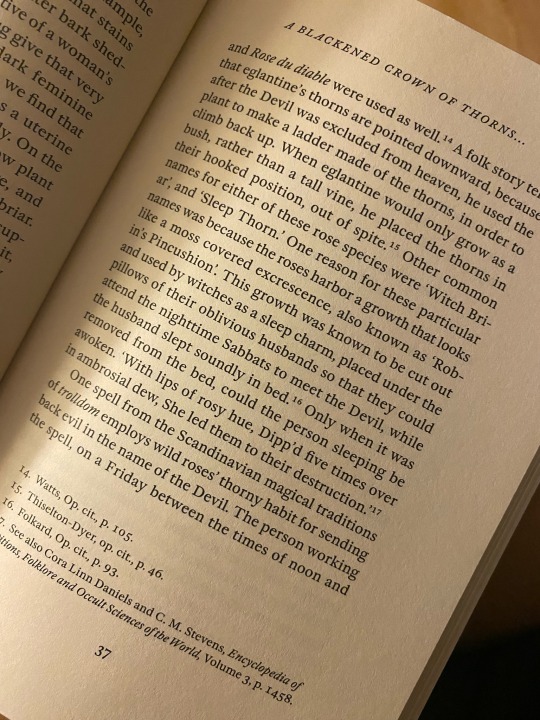
I am the land, the land is me.
I don’t own it, to it I owe all.
To it my body will return, the tithe paid.
I’m not rolling hills of heather, white chalk cliffs, the monk’s island nor the azure coast. The memories of these places echo distantly in my blood, sung alive by my ancestors shades. Part of me they’ll always be; yet it’s not who I am. Not what I am.
I’m craggy shores, dull-jade waves bearing down upon the tired rocks. I am musky pine forests veiled in mist. Sun-venerating oaks hugging the shoreline. Bleeding alders in damp ground swelling. Proud maples sustaining generation upon generation with their boiled blood. Death-grey clay, exposed by running spring.
I am the kudzu, the itching moth, the knotweed, the Norway maple, the ivy wrecking havoc upon the land. My surname and light skin proof of a genocide ongoing. I am my ancestors sins; the specter of the Old Growth forests, their grief hanging over the land like a fog. Every interaction with The Land tinged with sadness, loss.
I am my maternal side’s copper curls. Melusine’s pride. Ave Landry! Ave Gauthier! Forebears mine.
I am my paternal side’s grief. The end result of decades of cultural warfare. The Jesuits stole our name….my hair will not be cut.
Never will I libate these glacier carved valleys with booze.
I am the plantain, learning a kinder way. The sumac reclaiming the orchard.
My Februarys, my Marches aren’t snow drops and daffodils peaking through the frozen ground. They’re steely skies and walls of sleet. Bloodroot heralds winters wane; not Brigid’s flower.
My June isn’t fields of poppies, it’s seas of crimson staghorn blooms skyward reaching.
My augusts aren’t golden shafts of wheat, swaying in summer’s last breaths; they’re explosions of neon-violet and honey-yellow. Corn ripening on the vine, supporting the climbing bean. The cicadas song reverberating.
Old Michaelmas marks harvest’s end, October potatoes long buried in soils darkness finally exhumed. The Devil his Rosy Briar to ascend and plunge.
With Novembers first snows the Dead come in.
I’ll never process around a standing stone nor know what it is to live and eat off the land my dead lay in. Finally, I’m learning to be at peace with this. To love and know the land I live on. I’ll always be a stranger here, a guest. I hope to be a good one.
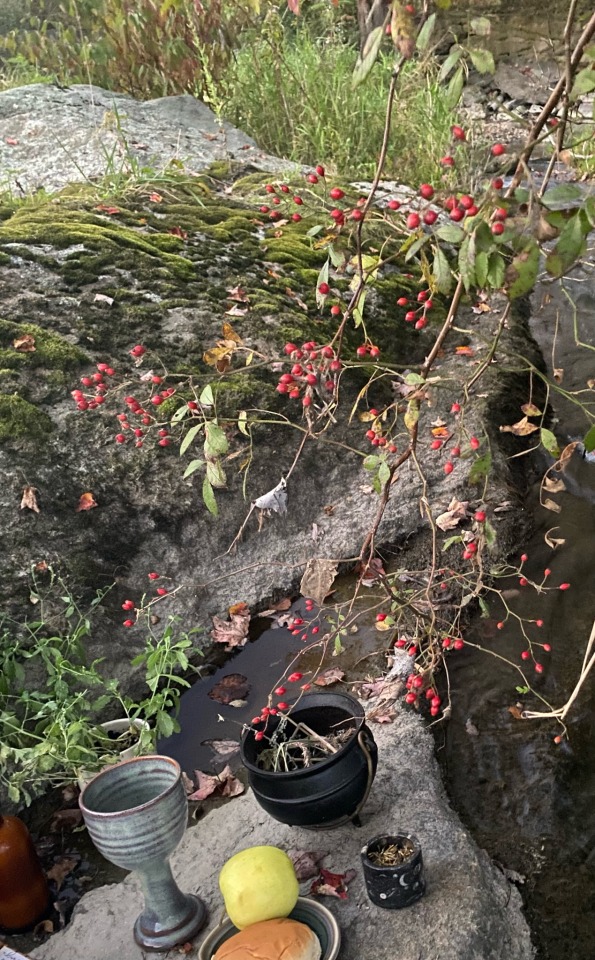
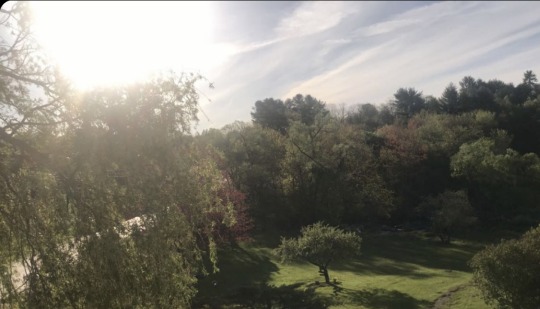
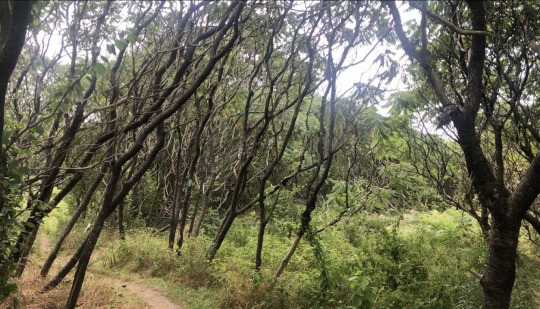
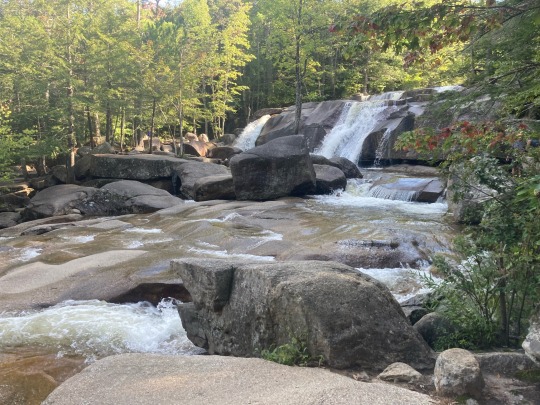
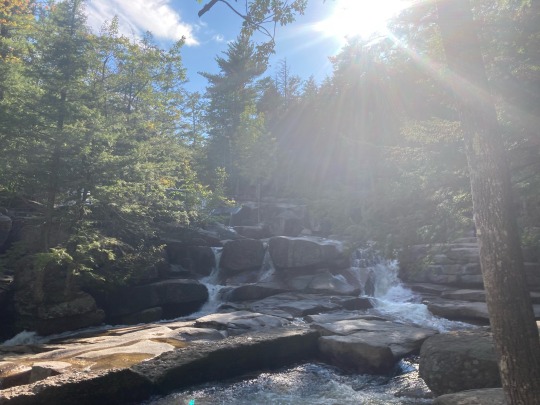
#folk magic#tradcraft#traditional witchcraft#witch#folklore#magic#magick#traditional craft#witchcraft#occult#animism#animist#animistic#animists#witches#indigenous#reparations#Michaelmas#native plants#invasive plants#ancesters#ancestry#ancestral veneration#American witch#American witchcraft#Daniel schulke#traditional American witchcraft#American traditional witchcraft#Corrine Boyer#poetry
91 notes
·
View notes
Text
Genius Loci
What is it? What does it mean? It can be translated as “spirit of place” and throughout history different cultures have perceived and connected to it in differing ways.
Every place, be it a park,a forest, a busy city street or your home has it’s own Genius Loci. But what really is it? It is the depth of that place, it’s personality, it’s history, the feel, smell, look, taste, and sound of the place. All of these things together create it’s spirit. It is the sense of calm you feel when you look over a lake at sunrise, the sense of mystery in the foggy woods you wander through, the sense of connection, sadness and respect you feel walking through a graveyard, the feeling of peace within your home. There are many ways to view it, to feel it, to connect to it, to let it fill you and so on.
How to connect to it?
There are many different ways to connect to the spirit of a place. But first you have to be aware of your own spirit and how it fits into the spirit of the place. When you look at a sunset and feel your soul stir, you are passively connecting to the spirit of it. The way I most often use to connect with the spirit of a place is to meditate.
Like any meditation, sit, get comfortable, and start by focusing on your breathing. Then, use your other senses to get a better ‘feel’ for the spirit of place.Listen to the place, breathe in rhythm with how the place sounds. With the breeze, with the animals, with the sound of the water moving (if there is any near). Let your own sounds, your heartbeat, your breathing, your own soul sync up with those sounds. (this can be difficult with people around, though a busy street or park has as much spirit and personality as an ant hill!) Feel the grass or the dirt, the trees or the water, the sand or the couch, the sidewalk… wherever you are. What does the place physically feel like? Is it rough or smooth? Soft or jagged? What do you feel like compared to the place? Do you leave footprints? Indentations? How does your physically being there change it, if at all? Smell the world around you, what scents do you smell? Is there a fresh garden nearby? Do you smell food? Trash? Salty air? Fresh water? Damp earth? Does your own scent stick out or does it match/ belong in the place as a part of it. Look around you! This might seem obvious, but it is probably the easiest way to get a general feel for the spirit of a place. Is it busy and bustling? Is it calm and serene? Are there old buildings or new? What is the history of the place that you can see outright? Is it run down or well kept? What do the things you see about the place make you feel? Taste (perhaps not literally, and definitely only if safe) this is not to say stick dirt or grass in your mouth and eat it…. that’s just silly. But smell and taste are linked, so simply opening your mouth wide and taking a deep breath can allow you to ‘taste’ the air. Is the breath you took clean? Or is it dirty? Was it refreshing, or not? This is the sense that can be most difficult if not impossible to use to get a sense of spirit of place.
Those senses simply give an idea of what the spirit of place is. For simply going out for a quick meditation and finding your place within that space, it can be a great exercise to do all of these and then journal about them. Continuously doing so in the same place can help you get a real sense of the spirit of the place.
Another way to get to know the spirit of a place is to research its history. What has happened in that place? Who lived there? Who died there? If it is a forest, was it always? Was it always a swamp or lake? Were battles fought there? Was it once farmland? Knowing these things about a place before you go out and explore or meditate there can help you protect yourself from lingering negative energies and emotions that still persist in a place.
On top of that even, would be learning weather patterns in the area. What seasons does it experience? What direction does the water flow (and what could that represent?)
Genius Loci In History
The Romans viewed genius loci as a protective spirit of a place, often giving the spirit of a place a physical embodiment. Spirits that walked the world in physical form to protect forests, rivers, mountains, swamps and so on. Fairys, elves, dryads, satyrs, unicorns and all manner of mythical creatures are representations of the spirit of a place. Other times, the spirit of a place (on a larger scale than a single spot next to a river) can be seen in the art style, furniture style, food and home style of an area and the people who live there. Animals, too, are often symbols of the spirit of a place.
Different native cultures around the world have all been highly concerned with the spirit of place. They held sacred rituals in the same locations, and gave offerings to spirits, ancestors and the land itself to bring about manifestations of good harvest, good fortune and the like.
Through myth and tale, the stories of the spirits of these sacred places have been preserved and passed down. Even though times have changed and humanity as a whole continues to change the phsyical face of the world we live in, the spirit of the place persists and often changes with us. Those old spirits still feel, and their pain at the changes we have made can be strongly felt at times. Other times, in gardens or wild places, we can feel their happiness and joy or even rage that we are trespassing in sacred places.
Spirit of Place in the home
In your own home and at work there is a spirit of place. And at home it is especially prudent to keep the spirit of that place ‘appeased’ and protective. It does your spirit no good to be at home and not feel safe or at peace. The general feel of your home is the spirit of place. Do you enjoy a cozy and cluttered atmosphere? Or a minimalist and clean or organized space? Is your home warm and welcoming to others? Or do you more prefer to keep to yourself?
Within your home, the spirit of place (at least I believe) is a very good reflection of your own personal spirit. It is the place your spirit should feel as if it belongs and where it should be able to go to recharge. If your spirit feels out of place there, like a puzzle piece in the wrong spot, then you should try and arrange that space to better refelct you.
For me, my home is warm, welcoming, and my door is always open to friends and family. I’ve always got a teapot on the stove, ready to make a cup for anyone who comes over, candles lit to give light and warmth, a puppy who fills my home and my own spirit with joy and boundless energy, a bookshelf, organized and never covered in dust, my altar where i go to do my spiritual recharging, and a general sense of peace and calm (I feel) permeates my apartment. My table is always set for more than myself, though I most often eat alone, and my spare bed is always open to any friend who needs a place to sleep.
I’d like to think that what I feel in the spirit of place of my home is the same welcoming and warm feeling others get when they arrive. It all boils down to you, here, and what kind of spirit of place you bring to your home.
~If you’re still reading at this point, I thank you, and if you’d like me to ever add to this post, please feel free to message me with info, links, or ideas~
/l\
M.G.
TheBasilDruid
#witchcraft#pagan#paganism#witch#my content#my original content#essay#genius loci#spirit of place#animism#animistic#animist#my essay#spiritual essay#spirituality#spiritual
33 notes
·
View notes
Text
I finally found a name for how I interpret parts of the world. POSIC
Which means: Perception of object sentience, Individuality, and consciousness. Basically, I see some things as being more than just things. This is something anyone can experience regardless if they’re ND or not. I somewhat find it odd how I haven't seen the word Animism pop up in the POSIC tags as that's what it is. I guess I'm just slightly confused about why a new word needed to be coined when this phenomenon has already been documented and named. But hey whatever works right. Everyone is different so it doesn’t always manifest in the same way. The way it manifests to me is extremely random, to say the least, so I've decided to list some of those ways that I can properly word for fun and hey maybe I'll find someone who relates.
“Sudden”: This is when something is instantly locked on as ‘’alive”, Ex: me buying two of the same stuffed animal because they’re obviously partners and can’t be separated or the time I was distressed watching a building get demolished despite having no connection to it, just passed by it on the train every day as they were talking it down.
“Spoke to me first”: In this category, we mostly have robots, AI, and computers. It chirps at me and I chirp back.
“Positive Response “: This has really only happened with my computer but essentially I perceived improved performance in its functionality by talking to it much like someone talks to plants.
“What if?”: This happened primarily because of my building people OCs, but the question arises as “What if X had feelings?” much like a Pixar movie, and yhea that’s a good way to view it, just following the Pixar logic.
“Built Relationship”: This has only occurred in combination with the ‘what if’, but feelings of safety/friendship are stronger at buildings I frequent
“Because you said so”: It takes a second but if someone tells me something is alive to them then it’s alive to me.
Furthermore, while I view things as alive they don’t all have an equal amount of sentience. To me buildings manifest as more human not only because of my OCs; but because to me buildings inherently have human energy due to architecture being art and I value art as the essence of humanity. “Human sentience” also manifests in most electronics like computers since they’re hosts of knowledge and respond to input
Most frequently my perception of things is the same way someone would look at a dog, "just a little guy" if you will. This occurs in stuffed animals, plants, and animal-like robots, like the little food delivery ones. Some hit an in-between, overly specific area. Like trains, generally, they give off “ough big dog response” but sometimes it hits the Pixar zone and is more human. I find that with this it’s generally based on my mood for some reason. Like If I’m outside and see the T go by my mind goes “big boundless creature that freely roams the city.” But if I’m actively on the T it switched to “This is a spiteful man that screams all day and loves fucking with everyone by never being on schedule.”
The strangest one I’ve experienced is my car. It holds no sentience until I’m driving it and it’s not it's own. It’s more like an extension of mine yet it has something. There is no proper way to explain that when I drive me and the car share consciousness. We’re drift compatible, she is my mech.
I should also clarify that I’m aware these things are not alive, conscious, or sentient. In a way it’s a spiritual kind of feeling, I just treat things a bit more kinder as if they will spring to life but I know they never will.
3 notes
·
View notes
Text
The Mysteries of Tibet’s Ancient Bon Religion | Ancient Origins
This post is about Tibet's Bon religion. This religion is a subset of a subset. But its very fascinating.
https://www.ancient-origins.net/human-origins-religions/bon-religion-0018570
View On WordPress
#3000 BC#7th century#Agye#Animistic#Bardo#Bon#Bon Yidams#Buddha#Buddhism#Cham#Christianity#Chucham#Four Transcendent Lords#Gdon#Lha#Magyu Sangchong Tartug#Mountain of Fire#New Bon#Old Bon#Phowa#Procreator#Sangpo Bumtri#Satrig Resang#Shenlha Okar#Shenrab Miwoche#Sherab Chamma#Shri#Tantric#The Teacher#Tibet
0 notes
Text
Animism: The Idolatrous Worship of Creation

View On WordPress
#africa#anima#animism#animist religions#animistic#buddhism#earth worship#Gaianism#genius loci#Hayao Miyazaki#Idolatry#idols#ifa#korean shamanism#loas#neopagans#New Age#oldest religion#Orisha#paganism#pagans#primitive religion#shrines#spirited away#studio ghibli#tree worship#west africa#worship rocks#worship trees#worshipping nature
1 note
·
View note
Photo

Untitled Acrylic, Holi Powder, on Paper
22 x 30 in. / 66 x 75 cm
2021 . #painting #unframedart #Holi #holi #acrylic #surreal #surrealism #head #artoftheday #artoninstagram #originalart #arte #kunst #availableart #artofinstagram #illustration #art #animistic #animist #animism #artistsofinstgram #artist #myart #contemporaryart #instaartist #kunstwerke #jessepaulmiller (at The Diller Hotel) https://www.instagram.com/p/CSZ5BMMp1wp/?igshid=NGJjMDIxMWI=
#painting#unframedart#holi#acrylic#surreal#surrealism#head#artoftheday#artoninstagram#originalart#arte#kunst#availableart#artofinstagram#illustration#art#animistic#animist#animism#artistsofinstgram#artist#myart#contemporaryart#instaartist#kunstwerke#jessepaulmiller
0 notes
Text
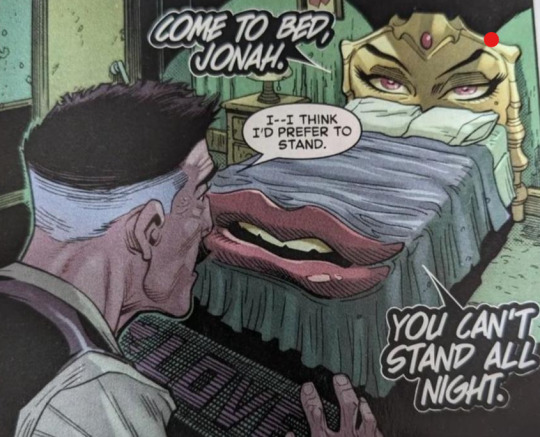
#silly stuff#spider man#object oriented ontology#animist horror#chuck tingle writes “Spider-Man”#comic excerpt
563 notes
·
View notes
Photo


A baby thrumbo!!!!! It’s so small???? I’ve never seen one in the game! I love him so much! Look at him!!!
First | Next | Previous
#rimworld#gracie plays#art#my art#traditional art#rimworld art#unpolished art#baby thrumbo!!#His name is Big Dipper#That was the first random one so I went with it#He can be best friends with the baby black rhinoceros named Crescent#I can't stop staring at him#He's so precious#So teeny tiny!! <3 <3#The Animist Alliance
645 notes
·
View notes
Text
On animism
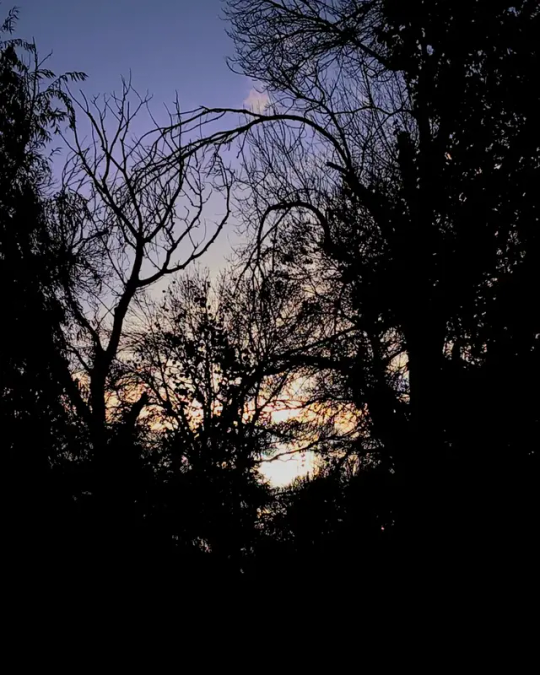
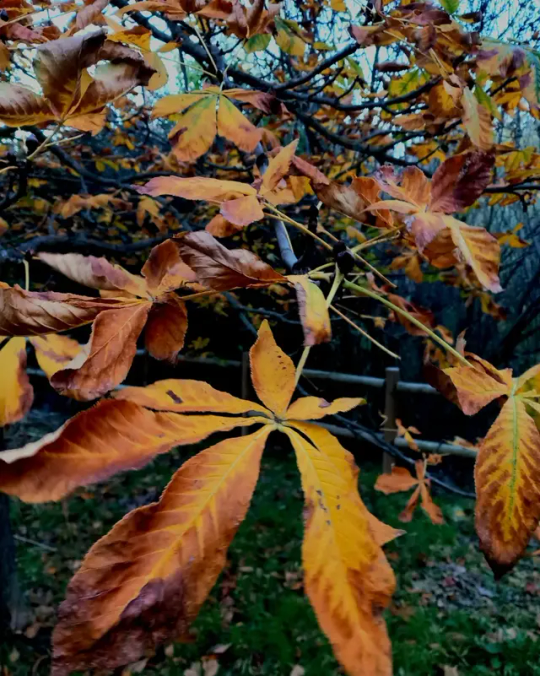
One of my teachers at university told us something today, that I believe to be relevant to animism and therefore also witchcraft:
He explained that in the West we see everything as occurences, whereas in some languages the same happenings are described as actions. Meaning that in the West we tend to imply that there is no agency involved in whatever happens, while some other languages tend to imply that someone activily causes things. His example was that in the West rain is understood as something that just happens, no one causes the rain. Whereas in Mesoamerica it was believed that it rained because some god was crying.
While the idea of a literal crying god causing it to rain on earth might be outdated, I find it really interesting how these two perspectives - events vs. actions - might shape our relationship with the world. If rain is not just an occurence, but someone acting with agency, rain becomes another part of the community we live in. The community then doesn't only consist of humans anymore, but of everything that surrounds us. Suddenly there are all these new players that actively affect your life with their actions. Other-than-human persons that you can interact with and with whom you have to keep a friendly relationship. If the tree in front of your house isn't just an object, but a being with agency, you actually have to be at least respectful and might even want to build a relationship with them, get to know them, learn from them.
I think that's really the core of animism. Descriptions of animism are often reduced to the believe that everything has a soul, but I think believe doesn't even factor into it. You don't need to believe that there is a non-physical aspect to rain, mountains, stones. It's about how we interact with them. I don't even have to ask myself the question if the tree in front of my house has a soul in order to learn about and from them or to interact with them. In my opinion animism is something that is done, not thought or believed. It's a perspective.
Listening to my teacher also reminded me of the following part of Braiding Sweetgrass (great book btw) which explains all this really well:
A bay is a noun only if water is dead. When bay is a noun, it is defined by humans, trapped between its shores and contained by the word. But the verb wiikwegamaa - to be a bay - releases the water from bondage and lets it live. "To be a bay" holds the wonder that, for this moment, the living water has decided to shelter itself between these shores, conversing with cedar roots and a flock of baby mergansers. Because it could do otherwise become a stream or an ocean or a waterfall, and there are verbs for that, too. To be a hill, to be a sandy beach, to be a Saturday, all are possible verbs in a world where everything is alive. Water, land, and even a day, the language a mirror for seeing the animacy of the world, the life that pulses through all things, through pines and nuthatches and mushrooms. This is the lan- guage I hear in the woods; this is the language that lets us speak of what wells up all around us.
[...]
This is the grammar of animacy. [...] In English, we never refer to a member of our family, or indeed to any person, as it. That would be a profound act of disrespect. It robs a person of selfhood and kinship, reducing a person to a mere thing. So it is that in Potawatomi and most other indigenous languages, we use the same words to address the living world as we use for our family. Because they are our family.
To whom does our language extend the grammar of animacy? Naturally, plants and animals are animate, but as I learn, I am discovering that the Potawatomi understanding of what it means to be animate diverges from the list of attributes of living beings we all learned in Biology 101. In Potawatomi 101, rocks are animate, as are mountains and water and fire and places. Beings that are imbued with spirit, our sacred medicines, our songs, drums, and even stories, are all animate. The list of the inanimate seems to be smaller, filled with objects that are made by people.
[...]
The language reminds us, in every sentence, of our kinship with all of the animate world.
- Robin Wall Kimmerer, Braiding Sweetgrass: Indigenous Wisdom, Scientific Knowledge and the Teachings of Plants (2013), p. 78-80.
#animism#witchcore#witch blog#witchcraft#witch books#braiding sweetgrass#witchy#folk witchcraft#folk magic#plant witch#bookblr#bookish#booklr#studyblr#animist
299 notes
·
View notes
Text
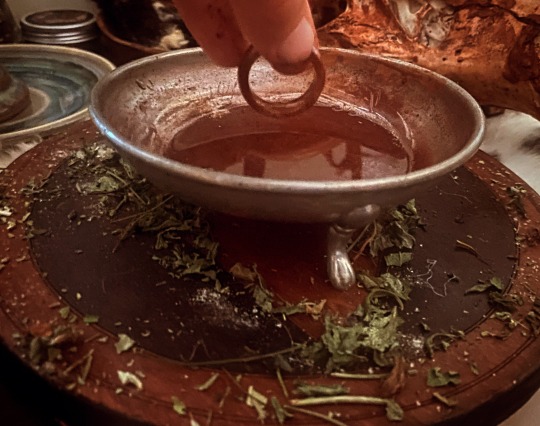
Reddening a moose bone ring to aid in facilitating congress with The Land. As far as I’m aware moose aren’t especially sacred to the tribes here nor could I find any stories where they played a significant role. Tho please do correct me if I’m wrong!
EDIT: there’s a rather funny folk story here regarding “Specter Moose”. Couldn’t help but think of it during the process haha.
#traditional witchcraft#magic#tradcraft#folk magic#magick#occult#witch#traditional craft#witchcraft#bone reddening#reddening#moose#animists#animal parts#animistic#animism#animist#spirit work#genius loci
38 notes
·
View notes
Text
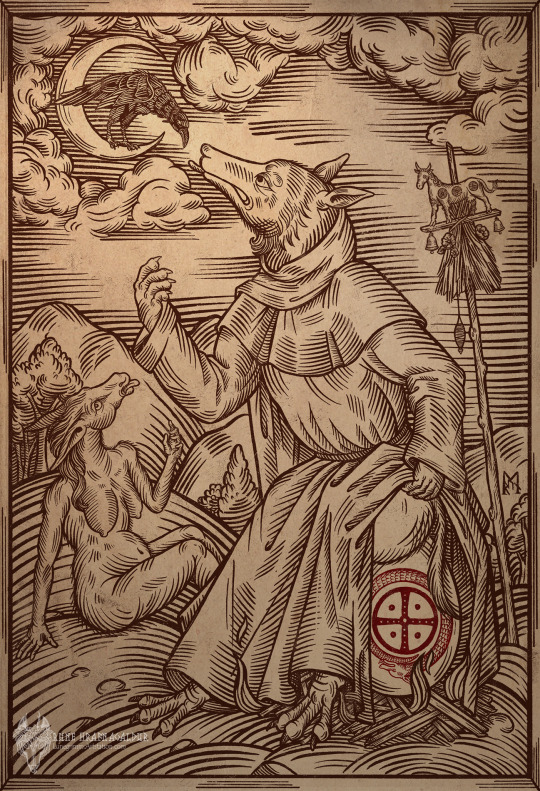

"The witches giving birth to summer"
Personal piece from earlier this year, Summer is already drawing to a close so decided to quickly post it now before autumn is in full swing :)
#art#artists on tumblr#digitalart#lunegrimmart#creature#medievalart#woodcut#anthro#animal art#animal calendar marker#animal calender#witch#witchers#sepent#solar#pagan#folklore#folklore art#fantasy#animist#animism#animist calendar#fire#egg#mule#witch art#dark art#dark fantasy#raven#night
263 notes
·
View notes
Text
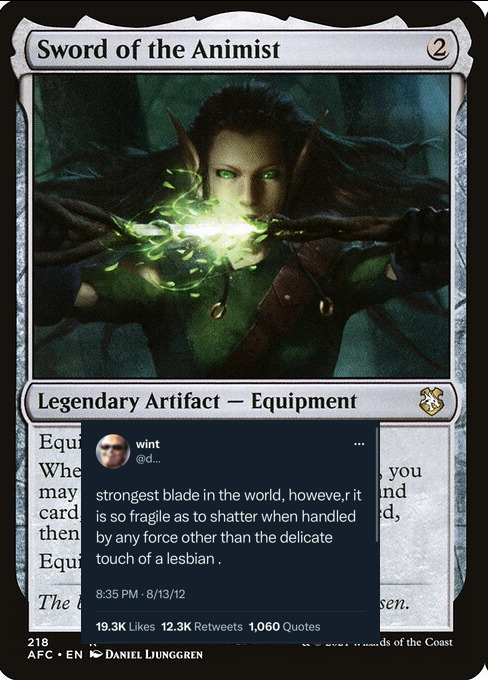
has this been done yet
#magic: the gathering#mtg#magic the gathering#magic the memening#memetg#nissa#nissa revane#sword of the animist
432 notes
·
View notes
Text
If you named your car you may already be an animist.
54 notes
·
View notes
Photo

Nissa, Ascended Animist
Artist: Chase Stone
TCG Player Link
Scryfall Link
EDHREC Link
#mtg#magic the gathering#tcg#chase stone#nissa ascended animist#phyrexia: all will be one#legendary#planeswalker#nissa
45 notes
·
View notes
Text
Heathenry is Entwined
My Heathenry is entwined with everything I do. It is not separate.
My polytheism, my animism, it is entwined with how and who I am.
It is a lived, living religion that is part of all I do, why I do it, and how.
It is part of why I hold the politics I do. It is part of why I do the work I do. It is part of how I am a partner. It is part of how I raise my children. It is part of how I am in my communities.
For those saying that we must remove religion from politics, utterly, you are telling me to disappear. For those saying that we must remove religion from public life, you are telling me to disappear.
I am not asking for my religion to be dominant, the most important, or the only one adhered to. I want plurality. I want a world in which we can live together. Barring that, I want a world in which there can be respect for one another and we can live as we wish.
I cannot do that with bigots. I cannot do that with homophobes, transphobes, queerphobes. I cannot do that with white supremacists. I cannot do that
50 notes
·
View notes